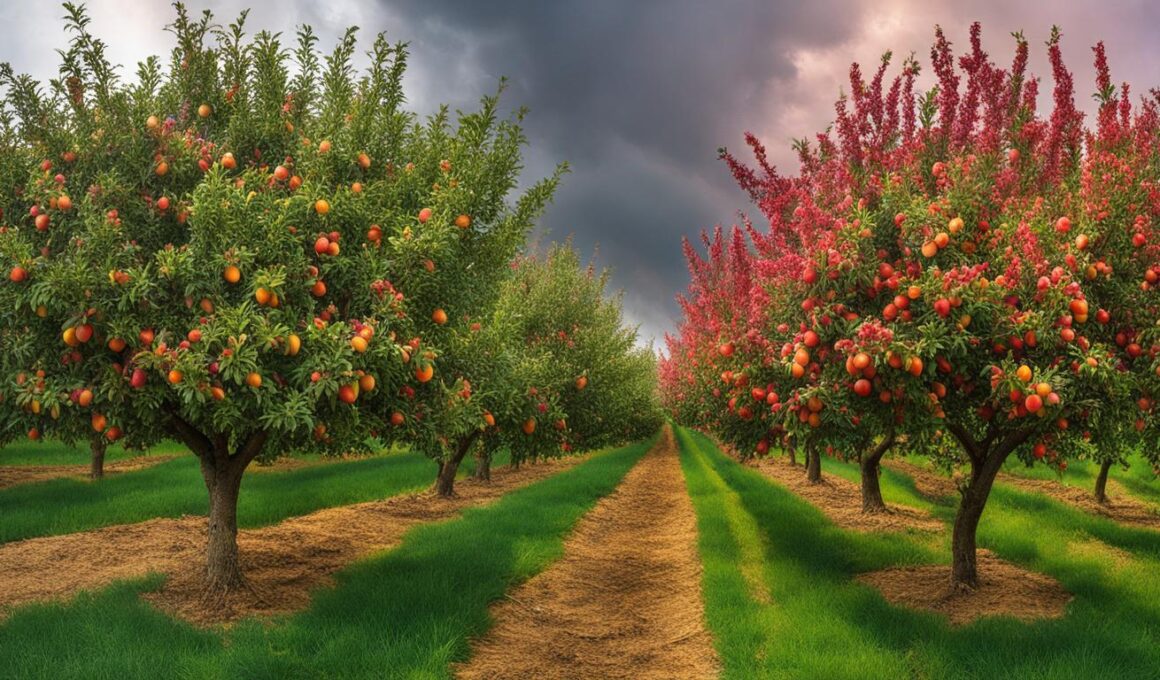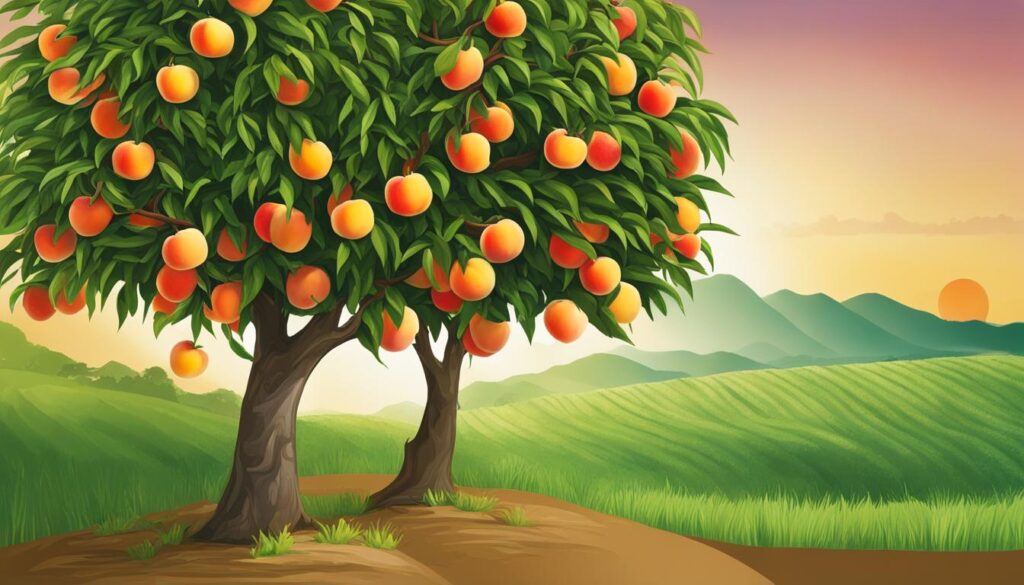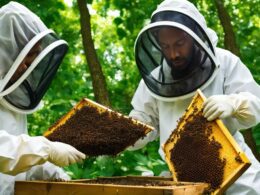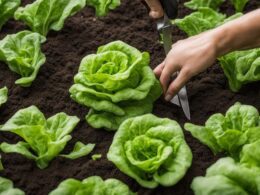Growing a peach tree in your backyard can be a rewarding experience. There are dwarf and standard-size varieties available that can fit in large containers or make attractive landscape plants. Peach trees require regular attention and maintenance but can live up to 15 years and produce delicious fruits. The growth stages of a peach tree include getting established, developing roots and branches, flowering, and fruiting. Understanding these stages and providing the right care and maintenance will help ensure a fruitful backyard orchard.
When it comes to growing a peach tree, knowing the different growth stages is essential. From the moment you plant a young peach tree in your backyard orchard to the time it produces sweet, succulent fruits, there’s a journey filled with excitement and anticipation. Each growth stage brings its own set of requirements and rewards. By understanding these stages and providing the necessary care and attention, you can foster the growth of a healthy and productive peach tree.
Let’s explore each of the growth stages in detail:
Choosing the Right Peach Tree
When it comes to choosing a peach tree for your backyard, it’s important to consider several key factors. By taking into account the variety, climate zone, chill hours, and site selection, you can ensure the successful growth and productivity of your peach tree.
First and foremost, determine your climate zone and the number of chill hours your area receives. Peach trees require a specific number of chill hours to break dormancy and promote healthy flowering and fruit production. Typically, peach trees need between 500 and 1000 chill hours. If your area doesn’t receive enough chill hours, you may need to consider low-chill or early blooming varieties.
Next, pay close attention to site selection. Choose a location with ample sunlight exposure, as peach trees thrive in full sun. Additionally, select an area with consistently moist soil that drains well to prevent waterlogging. The ideal soil for peach trees is loose, well-drained, loamy soil enriched with organic matter.
When it comes to variety selection, there is a wide range of options available. There are over 300 cultivars of peaches, each with its own unique characteristics. Some varieties are early-season, meaning they produce fruit earlier in the year, while others are late-season, producing fruit later in the season. There are also cold-tolerant and heat-tolerant varieties, as well as disease-resistant options.
Varieties based on Preferred Characteristics
If you prefer early fruits, consider varieties like ‘Earlipe’ or ‘Redhaven.’ For those in colder climates, ‘Reliance’ or ‘Cresthaven’ are excellent choices due to their cold tolerance. Heat-tolerant varieties such as ‘Florida Prince’ or ‘June Gold’ are better suited for warmer regions.
When it comes to disease resistance, ‘Veteran’ and ‘Contender’ are known for their resistance against common peach diseases. Keep in mind that some varieties may require specific growing conditions and may be more suitable for certain climate zones.
By carefully considering these factors and selecting a peach tree variety that matches your climate and preferences, you can set your backyard orchard up for success and enjoy bountiful harvests.
The Life Cycle of a Peach Tree
A peach tree goes through several phenological stages during its life cycle. The first stage is dormancy, where the tree appears inactive and its growth is temporarily halted. This stage typically occurs during the winter months when temperatures drop and daylight hours decrease. Once the tree emerges from dormancy, it enters the bud swelling stage, where the buds on the branches start to enlarge in preparation for the upcoming growth.
Following the bud swelling stage, the calix color changes, and the tree enters the blooming stage. This is when the tree bursts into a beautiful display of flowers, attracting pollinators such as bees. The flowers are crucial for future fruit production as they need to be pollinated to develop into fruits. After successful pollination, the tree progresses to the fruit set stage, where small, young fruits begin to form.
As the fruits mature, the peach tree enters the final stage of its life cycle – fruit ripening. The green fruits gradually change color, becoming fully ripe and ready for harvest. This is the stage where the tree’s hard work comes to fruition, and you can enjoy the delicious taste of fresh peaches straight from your backyard orchard.
It’s important to note that each stage of the peach tree’s life cycle has specific heat requirements. Growing degree hours (GDH) or growing degree days (GDD) are used to measure these heat requirements. The total GDH required for a peach tree to reach full bloom can vary depending on the cultivar and growing conditions. Understanding the growth pattern and heat requirements of a peach tree can help you plan and manage irrigation and other cultural practices effectively, ensuring the tree’s optimal growth and fruit production.
What are the Growth Stages of a Peach Tree and How Does it Compare to Propagating a Magnolia Tree?
The growth stages of a peach tree begin with planting a seed or a young tree, followed by the vegetative growth stage, flowering and fruiting, and finally the maturity stage. In comparison, to propagate a magnolia tree, one can use either seed propagation, cutting propagation, or grafting methods for successful propagation.










